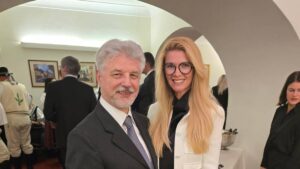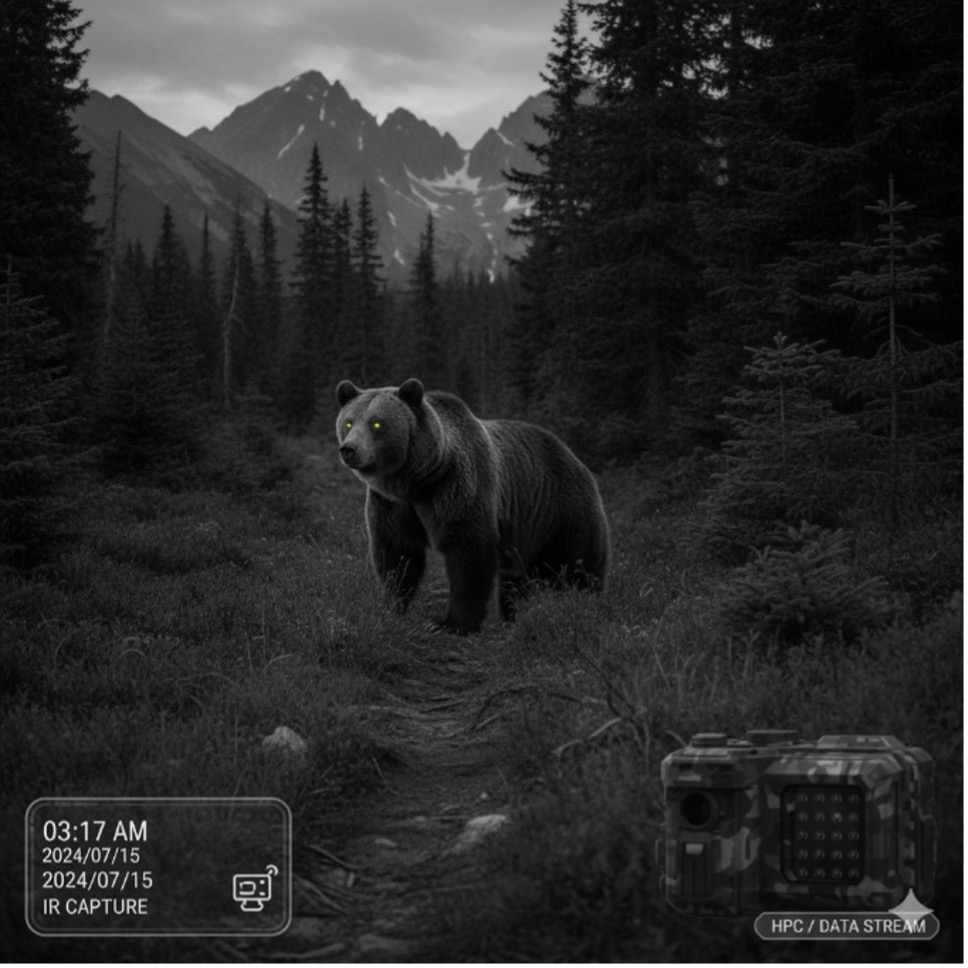The computing power of HPC brings new opportunities in the protection of the brown bear
High-Performance Computing (HPC) is a key technology of the modern era that fundamentally transforms the way complex problems are solved. Supercomputers can process enormous volumes of data and perform billions of calculations per second – tasks that would take ordinary computers months can be completed within hours. As a result, HPC accelerates scientific discoveries, enables simulations ranging from molecular interactions to climate change, and opens the door to the practical use of artificial intelligence. It is a driving force of innovation and competitiveness in medicine, industry, energy, and environmental protection.
It is not just an abstract concept – its benefits can be seen in concrete applications. Thanks to HPC, Slovak researchers trained complex artificial intelligence models on thousands of camera trap images to recognize the brown bear. A process that would normally take weeks was completed by the supercomputer in just a few hours. The result is a success story: the combination of modern technologies with nature conservation, improved human safety, and more efficient scientific work.
Challenge:
Solution: A team of researchers from the Faculty of Natural Sciences and Informatics at UKF in Nitra developed an artificial intelligence system aimed at automatically recognizing whether a bear is present in an image or not. They used convolutional neural networks (CNNs) – the same principle applied, konvolučné neurónové siete (CNN) for example, in facial recognition on mobile phones.
For training the model, they collected:
- 4 974 images with a bear
- 656 images without a bear (other animals or empty forest)
The data were provided by the Slovak Hunting Chamber, the National Zoological Garden in Bojnice, and the State Nature Conservancy of the Slovak Republic.
Use of HPC infrastructure: Training artificial intelligence on such data is extremely computationally demanding. It requires repeated processing of thousands of high-resolution images (512×512 px), parameter tuning, and testing of different model architectures.
A regular computer would need weeks for this process. Thanks to the supercomputer and NSCC Slovakia, it was possible to:
- train the models within a few hours to days
- compare multiple approaches (ResNet, MobileNet, YOLOv8/v10)
- analyze the weak points of the model and visualize what it had “learned"
HPC enabled researchers to experiment quickly and efficiently – allowing them to move from a basic model to a methodology applicable in the future.
Results
- The model learned to recognize the basic features of the bear and achieved high accuracy during training (>90%).
- In real conditions (night shots, noise, camera movement), however, the accuracy is still insufficient for deployment in the field.
Impact and future: Although the results are not yet perfect, the research shows that artificial intelligence has great potential in nature conservation. In the future, automatic analysis of camera traps could:
- help monitor the population size and movement of bears
- reduce the risk of conflicts with humans
- save researchers hundreds of hours of manual work
The next step is to expand the dataset and use synthetic data – computer-generated images that will enrich the training database. Here too, the supercomputer will be crucial, since generating and processing such data is again highly demanding.
Thanks to the supercomputer, Slovak researchers managed to build the first step towards a system that could, in the future, facilitate the monitoring of the brown bear – a species that is part of Slovakia’s natural environment and cultural heritage.
 Success story: AI Helps Save Women’s Lives 17 Dec - Strach z rakoviny prsníka je tichým spoločníkom mnohých žien. Stačí jedno pozvanie na preventívne vyšetrenie, jeden telefonát od lekára či jedno čakanie na výsledky – a myseľ je plná otázok: „Som v poriadku?“ „Čo ak nie?“ „Môže sa niečo prehliadnuť?“
Aj keď skríning potvrdí negatívny nález, obavy často pretrvávajú.
Success story: AI Helps Save Women’s Lives 17 Dec - Strach z rakoviny prsníka je tichým spoločníkom mnohých žien. Stačí jedno pozvanie na preventívne vyšetrenie, jeden telefonát od lekára či jedno čakanie na výsledky – a myseľ je plná otázok: „Som v poriadku?“ „Čo ak nie?“ „Môže sa niečo prehliadnuť?“
Aj keď skríning potvrdí negatívny nález, obavy často pretrvávajú. VICE and the Digital Twin at the Pre-Christmas Hydrogen Infoday 11 Dec - Dňa 10. decembra 2025 sme sa zúčastnili podujatia Predvianočný vodíkový Infoday v Bratislave. Súčasťou programu bola prezentácia VICE – Vertical Integrated Cyclic Energy, Hydrogen, vedená Laurie Farmerom a Luciou Malíčkovou.
VICE and the Digital Twin at the Pre-Christmas Hydrogen Infoday 11 Dec - Dňa 10. decembra 2025 sme sa zúčastnili podujatia Predvianočný vodíkový Infoday v Bratislave. Súčasťou programu bola prezentácia VICE – Vertical Integrated Cyclic Energy, Hydrogen, vedená Laurie Farmerom a Luciou Malíčkovou.  Strengthening Slovak–Romanian Cooperation and the Development of Scientific Partnership 8 Dec - Romania’s National Day is a significant historical milestone commemorating the Great Union of 1918, when Transylvania, Bessarabia, and Bukovina united with the Kingdom of Romania. This moment laid the foundations of the modern Romanian state and remains a powerful symbol of national identity and unity to this day.
Strengthening Slovak–Romanian Cooperation and the Development of Scientific Partnership 8 Dec - Romania’s National Day is a significant historical milestone commemorating the Great Union of 1918, when Transylvania, Bessarabia, and Bukovina united with the Kingdom of Romania. This moment laid the foundations of the modern Romanian state and remains a powerful symbol of national identity and unity to this day.
